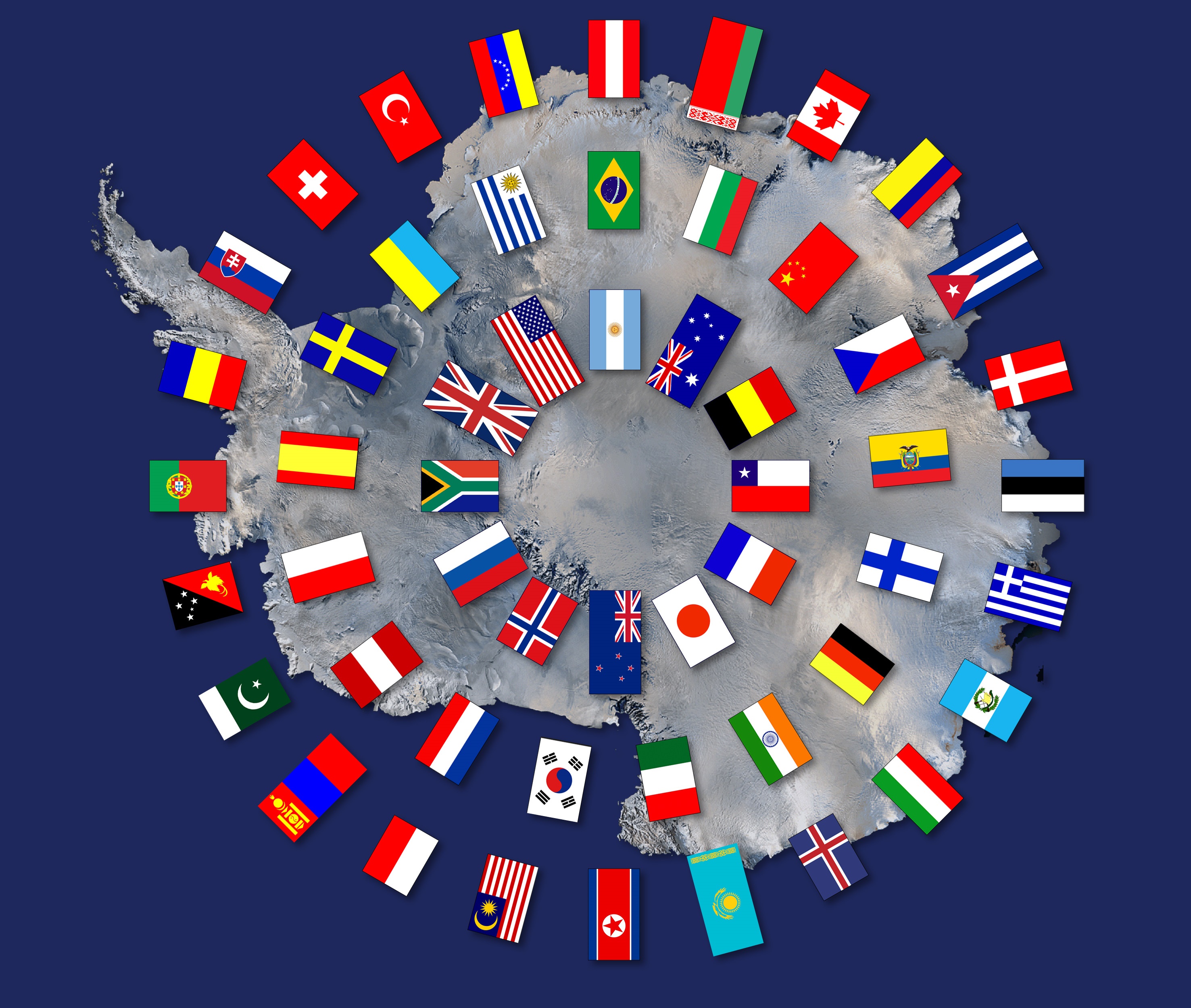Background
During the 1940s and 1950s, Antarctica was the subject of international tension. This was due to overlapping sovereignty claims and the tensions of the Cold War.
Following the success of the International Geophysical Year in 1957/58, the foundations were laid for an international conference to develop a long-term framework for peaceful co-existence and scientific co-operation in Antarctica. This subsequently led to the development of the Antarctic Treaty, which was adopted in 1959 and came into force on 23 June 1961 when it was ratified by the 12 countries active in Antarctic science at the time.
What the Treaty covers
The Treaty covers the area below 60°S latitude. Its objectives are simple yet unique in international relations. They are to:
- demilitarise Antarctica, to establish it as a zone free of nuclear tests and the disposal of radioactive waste, and to ensure that it is used for peaceful purposes only
- promote international scientific cooperation
- set aside disputes over territorial sovereignty
The Treaty today
The Treaty remains in force indefinitely. It has proved a tremendous success, seeing its signatories rise from the original 12 nations to 54 countries (as of May 2019), comprising over 80% of the world’s population. The Parties meet annually to discuss matters relating to Antarctic governance. Decisions must be agreed by all countries who have full voting rights. Currently 29 countries have such status. These “Consultative Parties” are those countries who are most active in Antarctica.
Antarctic Treaty System
Under the umbrella of the Antarctic Treaty, further Conventions and Protocols have been developed to address the issues of Antarctic resources and protection of the Antarctic environment. This includes the Commission for the Conservation of Antarctic Marine Living Resources (CCAMLR), which was agreed in 1980 to conserve all Antarctic marine living resources in the Southern Ocean and the Environmental Protocol, which came into force in 1998 and establishes a framework for the comprehensive protection of Antarctica, including:
- A complete ban on commercial mining;
- A mechanism to ensure that the environmental impact of all activities undertaken in Antarctica are considered and mitigated as far as practicable;
- Comprehensive protection of Antarctic plants and animals;
- Strong waste management procedures;
- Prevention of marine pollution;
- A system to protect the most sensitive and scientifically important areas of Antarctica.
Read the full text of the original Treaty
Further information can be found at the Secretariat of the Antarctic Treaty website

